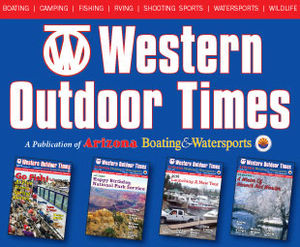WDFW Plans Public Meeting To Discuss Kalama River Steelhead Management
July 1, 2015
VANCOUVER, Wash. - State fishery managers have scheduled a public meeting Thursday (June 25) in Vancouver to discuss changes in the way the Washington Department of Fish and Wildlife (WDFW) is managing this year's return of hatchery steelhead to the Kalama River.
The meeting will be held from 6 p.m. to 8 p.m. at WDFW's Region 5 office at 2108 Grand Blvd.
With summer-run steelhead now moving into the river in increasing numbers, fishery managers are taking action to reduce the number of hatchery steelhead that reach upriver spawning grounds this summer, said John Weinheimer, a WDFW fish biologist.
"Studies have shown that hatchery fish make up half to three-quarters of all summer steelhead found upriver from the Kalama Falls Hatchery in recent years," Weinheimer said. "We want to talk to anglers about this situation, and the measures we plan to take to address it."
In mid-May, WDFW raised the catch limit to three hatchery steelhead a day to help reduce the number of hatchery fish moving upriver, Weinheimer said. Other measures planned or already in effect include:
Requiring anglers, effective July 1, to retain all hatchery steelhead they catch and stop fishing for steelhead once they reach their three-fish daily limit.
Suspending WDFW's practice of transporting hatchery steelhead above Kalama Falls, while encouraging anglers to catch hatchery fish that move above the barrier on their own.
Suspending WDFW's practice of "recycling" hatchery summer steelhead, a process that involves collecting the fish at Kalama Falls Hatchery and trucking them back downstream to give anglers another chance to catch them.
The main reason so many hatchery fish are reaching the upper river is that the fish barrier at Kalama Falls is failing to stop them, Weinheimer said. In recent years, significant numbers of fish have been observed jumping over the aging concrete structure, which is supposed to channel those fish back to the hatchery, he said.
The problem is exacerbated by recycling, which gives hatchery steelhead multiple opportunities to clear the barrier, Weinheimer said.
"Studies have shown that anglers catch about 20 percent of the hatchery steelhead recycled to the lower Kalama River," he said. "That would be OK, except that the barrier at the hatchery does not reliably stop the remaining fish from moving upriver."
Weinheimer said WDFW is seeking funding to improve the fish barrier, but that completing the project could take a year or more.
"Once we bring down the number of hatchery fish in the upper river, we can consider resuming the lower river recycling program," he said. "But that could take some time."
To help restore wild runs, WDFW's Hatchery and Fishery Reform Policy includes provisions to control the number of hatchery fish on the spawning grounds.
Wild steelhead populations on the Kalama River and in most other major Washington tributaries to the lower Columbia River were listed as "threatened" in 1998 under the federal Endangered Species Act.










Reader Comments(0)